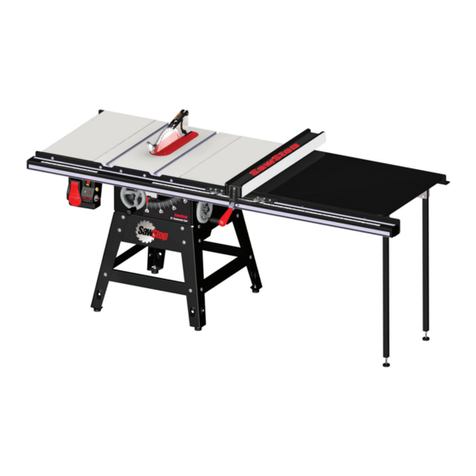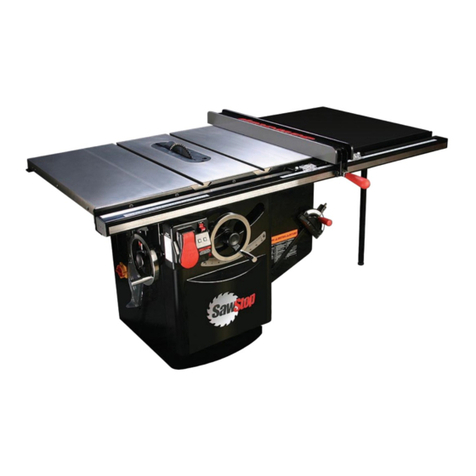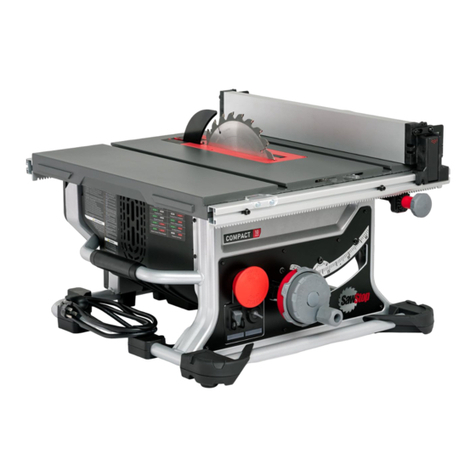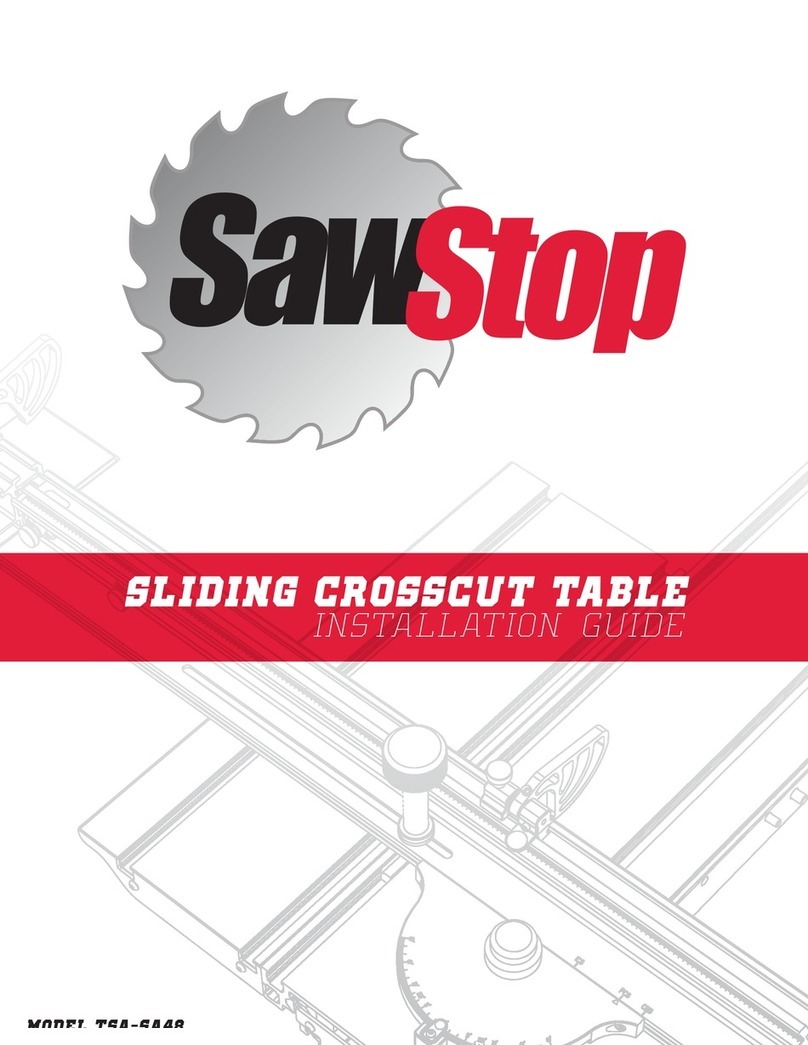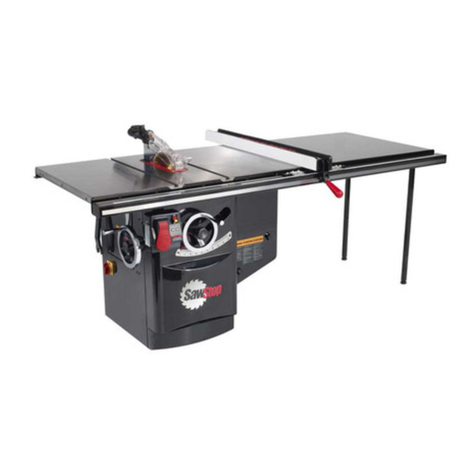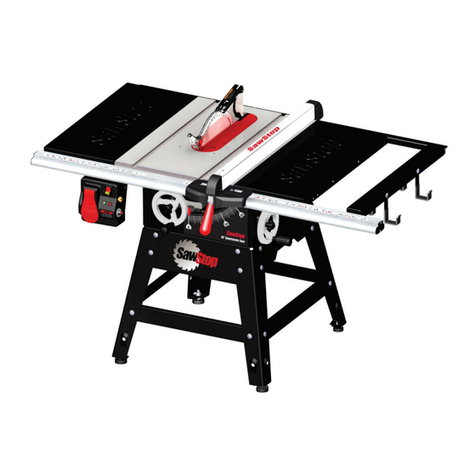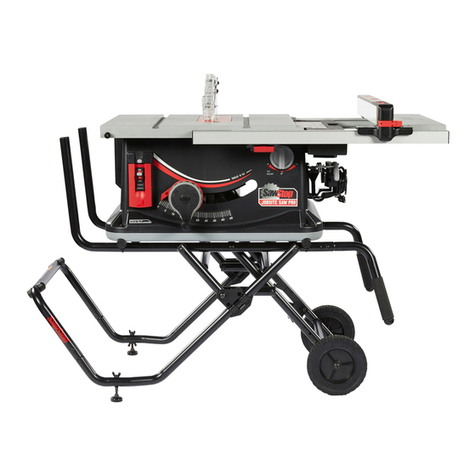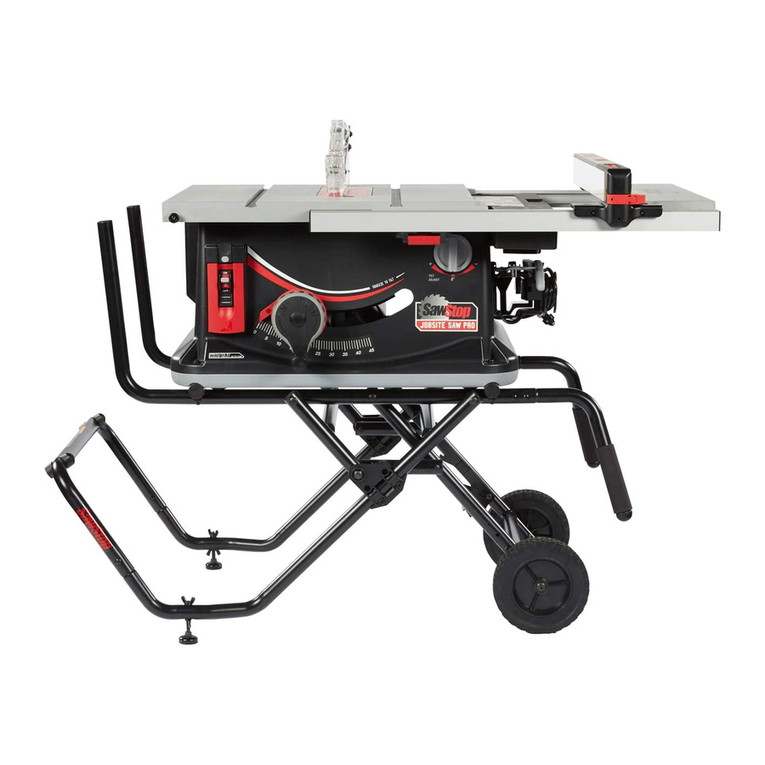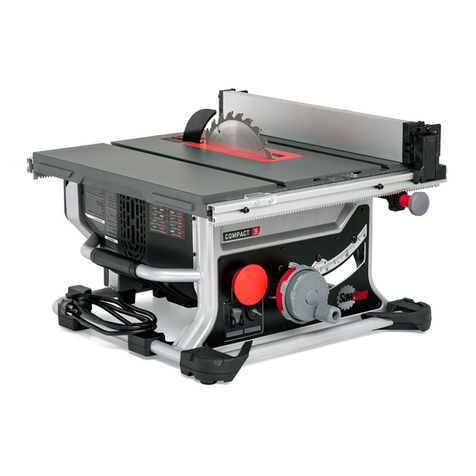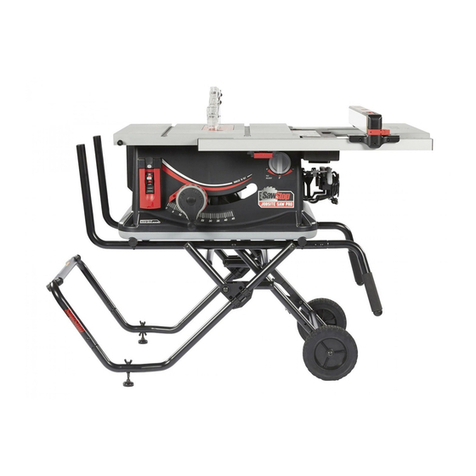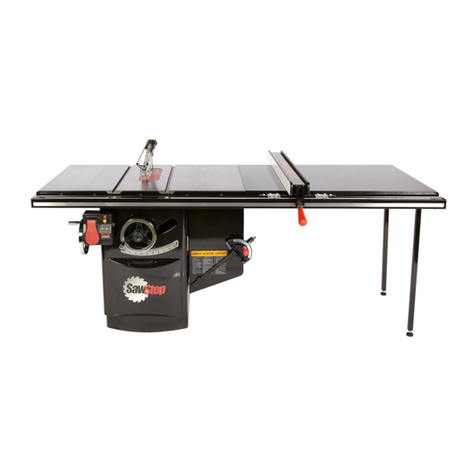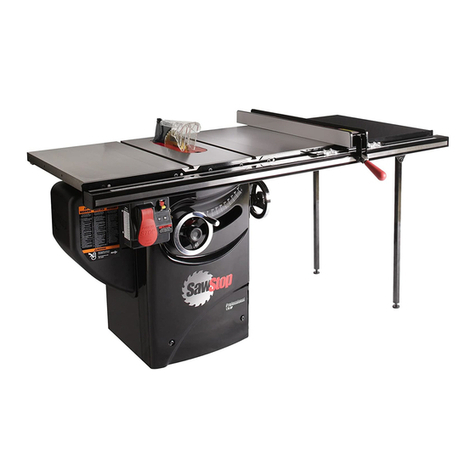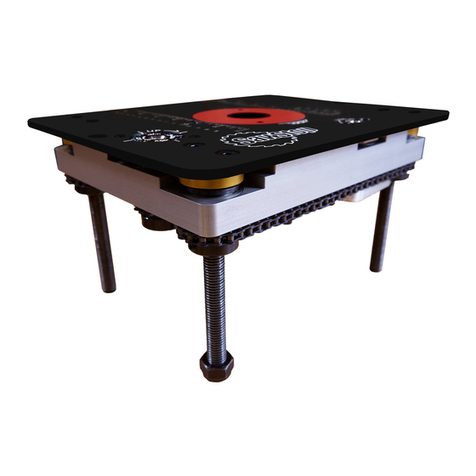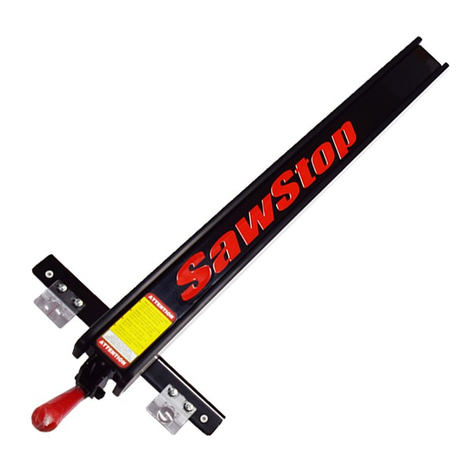
SawStop 10” Professional Cabinet Saw 5
Warranty
SawStop warrants to the original retail purchaser of a new Professional Cabinet Saw accompanying this
manual and purchased from an authorized SawStop distributor that the saw and any accessories purchased with
the saw will be free from defects in material and workmanship for TWO YEARS from the date of purchase.
SawStop warrants to the original retail purchaser of a refurbished, demonstration or floor model Professional
Cabinet Saw from an authorized SawStop distributor that the saw will be free from defects in material and
workmanship for ONE YEAR from the date of purchase.
This warranty does not apply to defects arising from misuse, abuse, negligence, accidents, normal wear-and-
tear, unauthorized repair or alteration, or lack of maintenance. This warranty is void if the saw or any portion of the
saw is modified without the prior written permission of SawStop, LLC, or if the saw is located or has been used
outside of the country of residence of the authorized SawStop distributor from whom the saw was purchased.
Please contact SawStop to take advantage of this warranty. If SawStop determines the saw or an accessory
is defective in material or workmanship, and not due to misuse, abuse, negligence, accidents, normal wear-and-
tear, unauthorized repair or alteration, or lack of maintenance, then SawStop will, at its expense and upon proof
of purchase, send replacement parts to the original retail purchaser necessary to cure the defect. Alternatively,
SawStop will repair the saw or accessory provided the saw or accessory is returned to SawStop, shipping prepaid,
with proof of purchase and within the warranty period.
SawStop disclaims any and all other express or implied warranties, including merchantability and fitness for a
particular purpose. SawStop shall not be liable for death, injuries to persons or property, or incidental, consequential,
contingent or special damages arising from the use of the saw.
This warranty gives you specific legal rights. You may have other rights which vary from state to state.
No Warranty of Safety
It is important to understand that the braking technology in SawStop table saws does not prevent contact
with the blade-it minimizes the effect of the contact. If you do contact the blade, the braking technology will stop
the blade, and in most cases there will be no injury or only a small nick. However, you may incur a serious injury
on a SawStop saw depending on factors such as the speed and direction your hand is moving when it contacts the
blade and the type of blade you are using.Also, if you decide to use the saw in Bypass Mode, the safety system will
be disabled and will not activate in the event you contact the spinning blade.
If You Have an Accident
We at SawStop hope you never have an accident with your saw, and strongly encourage you to always follow
safe practices and to use all the safety equipment provided with this saw. However, if you ever accidentally contact
the spinning blade, the safety system will detect that contact and stop the blade within milliseconds to minimize any
injury. If this happens, please contact us with information regarding the accident because it is very important to our
on-going research and development. The more we know about what happens during an accident, the better we are
able to ensure that the safety system will react as quickly as possible in all accident situations. In addition, the brake
cartridges store electronic data measured during an accident. If you return the activated cartridge to SawStop,
we can retrieve that data to learn how the electronics and software performed. If we confirm that your cartridge
activated due to skin contact, we will send you a free replacement cartridge. Thanks for your help.
